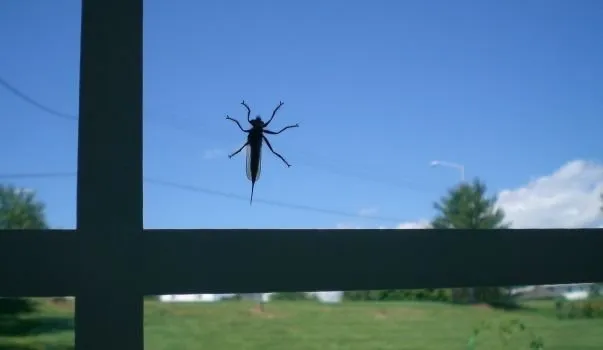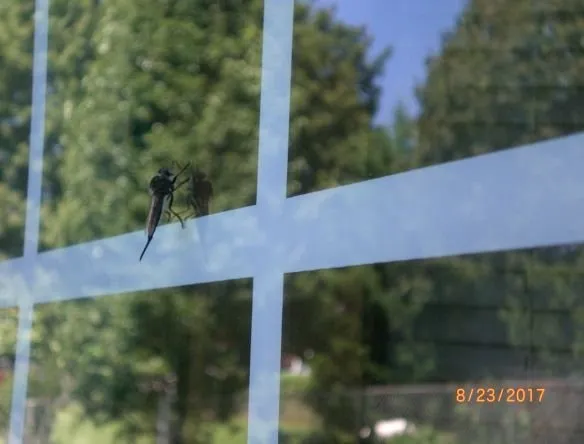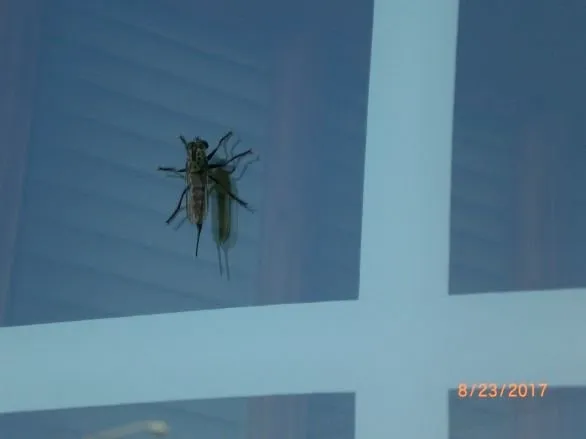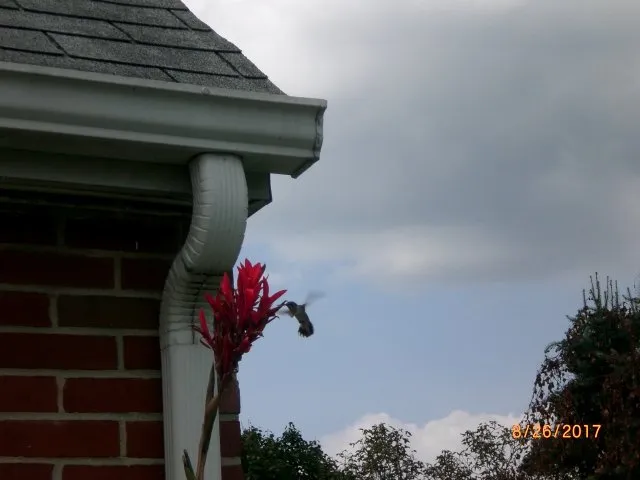On this day, I was leaving my house, opened the inside door, and I saw this huge thing on the outside of my storm door. I told you that these insects just kept appearing all around me. My research told me that this insect is called a "Horntail Wasp."

It looks like it has a huge stinger, but the Horntail Wasp doesn't sting or bite. That thing that looks like a stinger is actually called an "ovipositore" which is found on the females. When the female is ready to lay her eggs, she finds a tree that is in bad shape or dying because those trees have soft wood. She uses her "horn" (ovipositore) to split the wood of a tree trunk. She then injects her 2-7 eggs deeper into the tree trunk.

One year later, the adult Hornatil Wasps chew themselves out of the tree trunk leaving circular holes approximately the size of a pencil. Adults feed on water and nectar. Horntail Wasps are native to North America and can be seen June through early October.

The tiniest birds in the world are Hummingbirds. Their feet are weak and they can barely walk. Their weight can be anywhere from 2 and 20 grams. To give you an idea of their weight; weigh a penny and you will find that it is 2.5 grams. Hummingbirds can see farther and hear better than humans. They are the only birds that can hover in mid air, fly backwards and forwards, sideways and upside down. They can even fly up to speeds of 25-30 miles per hour.

They lap up nectar with their tongues, aided with the tiny hairs on their tongues. Females build their nests, lay 2 eggs, and the babies remain in the nest for 3 weeks. Many Hummingbirds die in the first year of their life, but their average lifespan is approximately 5 years.
Information Source: dixiepest.com, worldofhummingbirds.com
Image Source: 100% own work using a Casio Exilim Digital Camera.